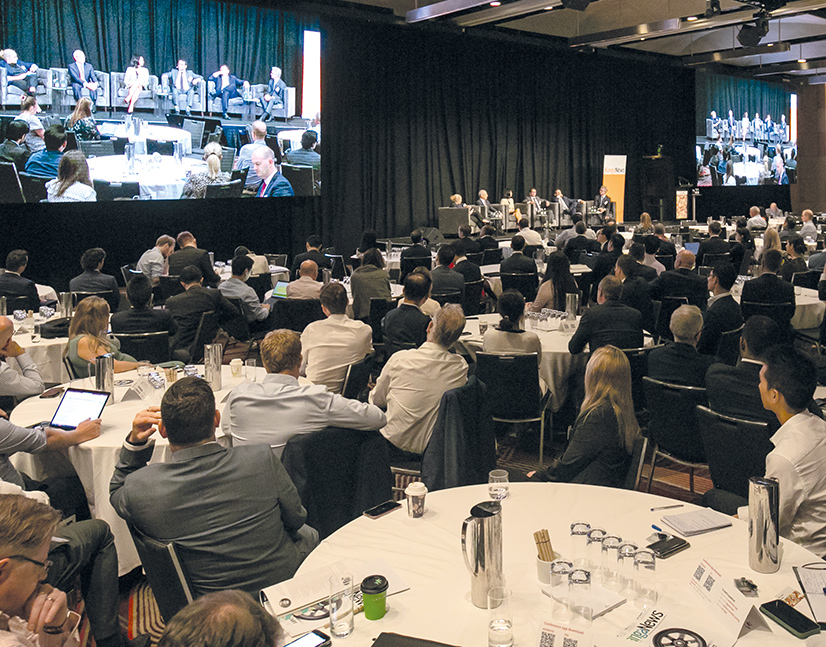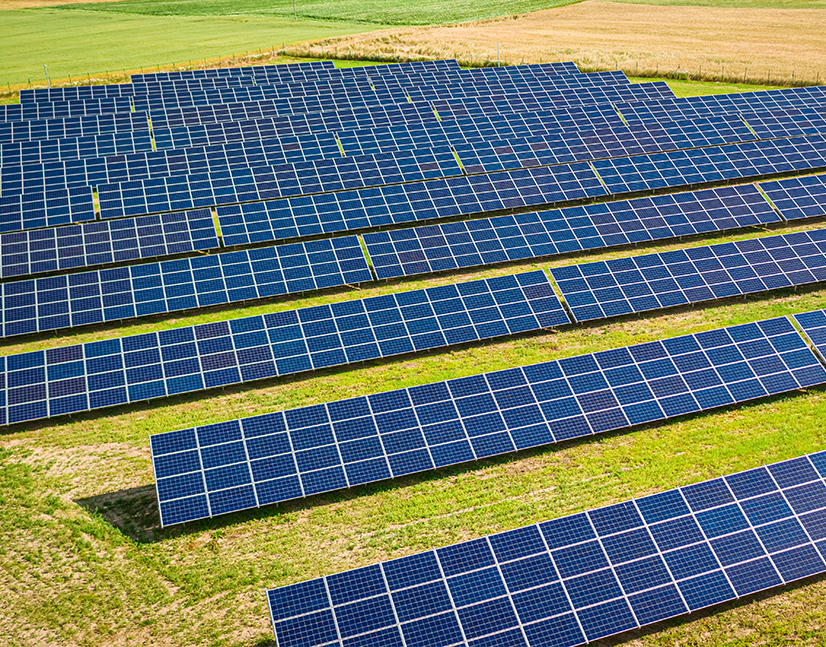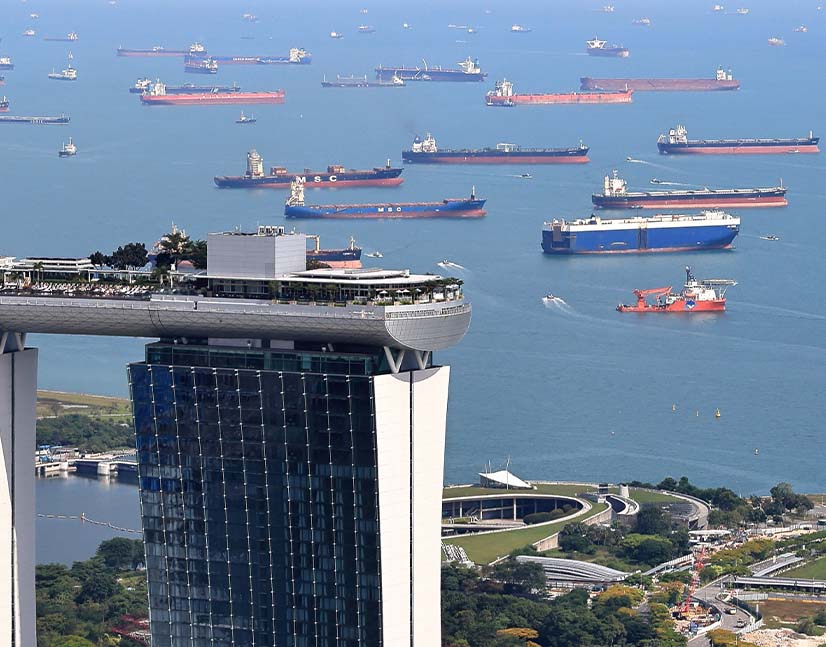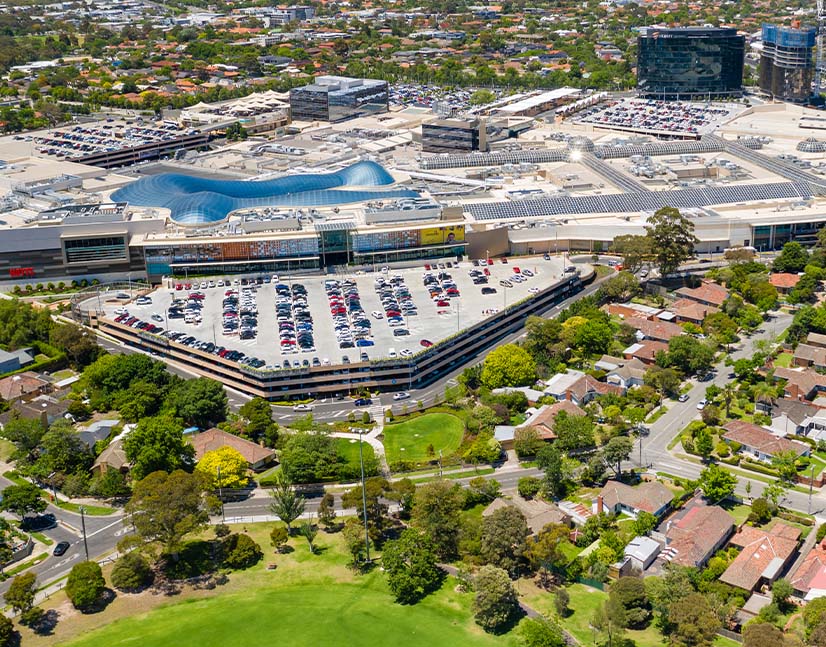
Global companies drive efforts to understand and quantify impact
The global sustainable-finance market continues to innovate in the areas of product, reporting and data provision among others. In this environment, ING and KangaNews gathered leaders from the Australian and European corporate sector with other market participants to discuss how borrowers are furthering the alignment between finance and corporate-sustainability goals.
MARKET DRIVERS
Davison It would be interesting to hear about corporate leaders’ sustainable-finance drivers – specifically the direction of causality. In other words, to what extent is engagement with sustainable finance a product of corporate goals versus corporate behaviour being driven by the demands of capital?
GERRITSON Schiphol Airport is a group of airports headquartered in Amsterdam. Many people know Schiphol Airport in Amsterdam but we also own a number of regional fields and have some stakes in international airports including Brisbane Airport and Hobart Airport.
We are majority owned by the Dutch state and, given the country is relatively small, we have very intense dialogue with local communities and our neighbours about pollution, noise pollution and our impact on the environment.
For many years, our ambition has been to own and operate the most sustainable airports in the world. Reaching this goal is a top priority in our strategy. Our sustainability agenda is driven from the inside by the board but there is also a direct push from the Dutch state as our majority shareholder.
We look at sustainability as a core theme, in terms much broader than just the impact we have on the environment. It is also about the degree of safety we can deliver at the airport and the way we treat our people. It is a broader ESG [environmental, social and governance] strategy.
The debt side is less of a push factor. In Europe, large investors have clear mandates to allocate a significant portion of their investments to green outcomes. But the dialogue I have with investors is somewhat lagging compared with what we have with other stakeholders. Investors appreciate the efforts we make but I would not say they are significantly pushing us in this direction.
CASTILLO Our approach is very similar to Schiphol’s. Jemena is a leading energy-infrastructure business so we play a direct role in facilitating and effectively delivering energy that is not only affordable but sustainable.
The main catalyst for this comes from within – the C-suite up to board level pushing sustainability directives and ensuring that, as an owner of energy assets, we are preparing ourselves to transition to a lower-carbon future. Accordingly, we are building a level of authenticity in how we approach the opportunities and challenges of the future in line with our own strategy.
We enhance this with the feedback we obtain from our discussions with external stakeholders, by which I primarily mean credit rating agencies, investors and financiers.
TRIGONA The core of NBN Co’s business is building a sustainable organisation with a strong social and economic mandate. The efficient use of natural resources and protecting the environment in communities in which NBN operates is crucial to ensuring we create value not only for Australians but also for investors.
The investor side is new for NBN. The focus was not on financing prior to NBN needing to undertake recent refinancing to start repaying a A$19.5 billion (US$14.3 billion) Commonwealth loan. Rather, it was on delivering for the people of Australia – so this is at the core of what NBN does.
We have not yet issued in sustainability format but we intend to do so. The conversations we are having with investors often include questions about when we will be issuing in sustainability format and whether it will be a use-of-proceeds (UOP) or a sustainability-linked bond (SLB) transaction.
Having said this, investors are aware of our credentials in this area. Issuing a sustainability bond would be an avenue to showcase how NBN is delivering on its social and economic mandate, and a way for us to promote investing in NBN, which has very strong potential social and environmental outcomes. Investors can work with us as we transition to meeting ESG objectives.
This type of issuance is also a way of expanding our investor base. We are new to the capital markets and we aim to issue in sustainability format domestically and internationally. We have a great story to tell and sustainability-bond issuance is a perfect way to get it out there.
Davison How do these issuers’ approaches fit in with global trends?
MUENKEL What we are seeing at the moment is quite monumental. As humans, we have lived beyond our means and created a lot of issues in the world. Climate change is one – not the only one, but it is really pressing.
This means we need nothing short of a revolution to decarbonise our economies, probably by around 50 per cent by 2030. If we do not do this we might not get to the absolute end goal, which is limiting the overall temperature rise to around 1.5 degrees compared with pre-industrial temperature levels.
Climate change does not develop linearly, it develops exponentially. A demonstration of this came just recently with new scientific data showing that parts of the Amazon region are now a net carbon emitter, rather than a carbon sink as they have been in the past. This is very meaningful.
Our discussions today need to consider the speed and quantum of financing sustainable outcomes, because we need to get on with the job of decarbonising our economies. We see three core drivers at the moment. Number one is government pledges and regulatory measures. Number two is an explosion of assets under management of ESG-focused investors. Number three is a very important complement to the first two: ever-increasing demand for sustainability-related disclosure and reporting.
Combining these three will have a monumental impact on equity and debt capital markets. There is around US$3 trillion of sustainable debt outstanding in the world today, with US$662 billion of this issued in the first half of 2021.
This curve is steepening exponentially and it is very promising to see what is happening here in Asia Pacific. The absolute amount of sustainable debt is rising very fast as is the share of sustainable debt as a percentage of total debt in the Asia-Pacific region. These are promising signs.
A key global theme in the last 18 months has been social loans and bonds, which have also exploded here in Asia Pacific especially as a reaction to the pandemic. We are living in an environment of ultra-low interest rates and excess liquidity, which may sometimes result in investors not pushing too hard. But the direction of travel is very clear: investors are more and more focused on ESG, across equity and debt.
Davison Many investors say they are keen to see labelled debt and robust issuer ESG standards but ultimately they are also starved of high-quality assets that provide a suitable return. Therefore they do not have much choice but to buy bonds with good risk-return characteristics regardless of ESG performance. Is it a problem that a capital ‘stick’ does not currently exist for issuers that are not strong ESG performers?
MUENKEL I would not go as far as saying the stick does not exist. We have seen increasing sophistication on the investor side, including the way the buy side goes about this topic. Looking at the Asia-Pacific investor base a few years ago, not many had ESG policies in place. But this is now rapidly developing. I think there is already a stick – and it will only become bigger.
The good news for borrowers is that there are so many advantages of looking into sustainable debt. One of them is a pricing advantage. There is no doubt there is now an equilibrium for highly rated corporates of a 3-5 basis points advantage – maybe even more depending on the issuer – between conventional debt and sustainable debt.
TRIGONA It is not just a cost benefit – it is really about accessing new investors. There are certainly investors we cannot access unless we issue in a sustainable format. We are growing our investor base and issuing in this format will give us the best access to as many investors as possible. We are already delivering on sustainable outcomes within the organisation.
GERRITSEN We have definitely seen lower cost for green debt, by around 3-5 basis points at the time of issue. But I agree that the main objective is further to diversify our investor base – this has been the case for all the green bonds we have issued. We have seen a significant increase in our investor base and this is one of the most important criteria behind such an exercise – that we attract investors with a different lens on this topic.
CASTILLO We view it as a carrot rather than a stick. The ability to have a commercially viable platform in place, that allows access to capital, is something treasury teams always want to optimise. While we have not yet accessed sustainability or green financing, it is certainly front of mind for us because we see an advantage: a small price incentive but, most importantly, diversification of funding sources.
Similar to the other issuers, we believe it is about having a consistent platform from which we can continue to access capital. To the extent certain investors have constraints or mandates that limit them to investing only in this type of format, this presents a further strategic driver for us to continue to explore these options.
Reporting comparison
Bringing climate reporting into line with financial reporting – in particular in the areas of quantifiability and rigour – is a key goal for markets and major companies. In Australia, it is largely up to market participants themselves to do the heavy lifting.
TRIGONA NBN Co released its first sustainability report earlier this year. The report looks at the UN Sustainable Development Goals (SDGs). The sustainability team selected seven key principles it believes are most aligned with our organisation, including a healthy and engaged workforce, improving gender diversity and climate action.
Climate-related risks are obviously key within NBN. With millions of Australians relying on the National Broadband Network, it is critical we operate a reliable and resilient network – and climate is clearly a major risk we have to manage. We have already had many crises in Australia in the last few years with bushfires, floods and, obviously, COVID-19.
We are mindful of our ability to report on and manage all these climate-related risks. We have taken steps to manage climate risk through business processes and programmes in accordance with the recommendations of the TCFD. We have also strengthened the company’s sustainability programme across governance, risk management, strategy and metrics, and targets.
We talk to clients every day and I have to say sustainability reporting and disclosure is probably one of the biggest headaches we hear about. There is an alphabet soup of big reporting standards and soon we will also have standards from IFRS. Alignment is happening, but we are obviously not yet there.
FUTURE PROOFING
Davison As a provider of market infrastructure, how does Singapore Exchange (SGX) view the themes that are driving uptake of sustainable finance?
CHO SGX wears multiple hats. First, we are a company ourselves. We are listed, we have our own shareholders and our own sustainability reporting to do, and we have to answer to our various stakeholders. Second, we are a business that manages a marketplace, whether it be equity, fixed income, currencies, commodities, data indices or anything else. Then we are a regulator, maintaining order and ensuring price transparency, liquidity, integrity and fairness in the market. This is really the role of the exchange.
We are living by a sustainability vision. We want to build a leading sustainable and credible transition-financing and trading hub that has end-to-end solutions, products and ecosystem. There are three key parts of our implementation strategy. One is leading, the second is future-proofing and the third is building. This applies equally to companies and investors in the long-term direction they take.
The leading part is really about thought leadership as well as network leadership, which is important for market infrastructure that connects the different parties of a market.
The second part, about future-proofing, refers to the actions all the participants in this roundtable have discussed. They are taking actions, despite some stakeholders not necessarily fully recognising why they are being taken. They are doing it because they know they are future-proofing their businesses.
The third angle, building, is about the opportunities that can be captured from the deluge of sustainability considerations that are coming – and they are coming. Part of this is the regulatory angle, whether it be for disclosure, taxonomies or to redirect capital. This is why financiers will move – and we are just at the cusp of this, including in Asia. Most parts of the world are just starting to build standards that are at least comparable if not harmonised, and this process will only continue.
The writing on the wall is clear and there is only one direction of travel. The question is how we future-proof the system and how we ensure that companies in the region continue to attract the right capital, on platforms in Asia, to deploy toward the projects that must happen. We all know sustainable-development needs are dire here in Asia Pacific.
Davison Let’s explore the concept of future-proofing in a business. Is this, in effect, a matter of understanding risk beyond financial risk, building this understanding into the business and then integrating it with financing?
CASTILLO From our point of view – having a very significant and direct part in facilitating the transition to a lower-carbon future in the energy market – we certainly appreciate and understand the role we play and how we can rebalance the composition of our portfolio. We ultimately do this with the customer at the centre of our approach, while making sure we can provide affordable energy.
There is still a price debate and we have to face the fact that there are still cheaper sources of energy generation than renewables. From this perspective, it is important for us to have the platform in place that enables us to facilitate transition in a gradual, affordable manner so we are not creating a price shock.
TRIGONA We are monitoring and managing our environmental impact. This is to ensure the network and business can continue to operate in a responsible and resilient manner. It will also extend to financing. We want to set up a programme that allows us to be sustainable in the future, with the ability to finance and refinance.
We have already discussed the fact that capital is widely available now but it may not be in the future. We need to show investors what we can achieve now and work with them as we aim to meet our carbon-reduction targets.
“We play a direct role in facilitating and effectively delivering energy that is not only affordable but sustainable. The main catalyst for this comes from within – the C-suite up to board level pushing sustainability directives and ensuring we are preparing ourselves to transition to a lower-carbon future.”
Davison Air travel is obviously an aspect of the global economy in which it will be very difficult to achieve net-zero emissions, at least until there is significant technological progress. How does sustainable finance intersect with future-proofing for an issuer like Schipol Airport, especially when the parameters are unclear?
GERRITSEN We recognise that something needs to change in the entire industry. As an industry, we have an impact on the environment – but there are various ways to mitigate it. We are trying to accelerate innovation and changes in behaviour – especially those of our largest clients, the airlines. We are not only building sustainable infrastructure ourselves but also pushing our clients to accelerate things such as fleet renewal. We are also investing in biokerosene and synthetic kerosene.
It is really the push from within that is accelerating different behaviour in the entire industry. We recognise that our own efforts, even as a large airport, are only a minor push in the grand scheme of things. But we are trying to have an intense dialogue with the other large airports, especially in Europe, so they mimic our behaviour.
We have some sticks to influence this behaviour and I think sustainable finance can definitely play a part in further accelerating it. But at the moment it is not something I see as much as we perhaps would like.
Davison Are the strategies we are hearing about fairly standard across global investment-grade corporates?
MUENKEL Considering the thoughts being presented I think these three issuers here are definitely a few steps ahead of their peers. But the concept of future-proofing business models is developing very fast. We see regional differences and differences by industry. But key risks to corporates are the same: physical and transition risks arising out of climate change.
I recently talked to the global head of sustainability at one of the world’s largest petrochemicals companies, and he asked me how I define sustainability. I was a bit surprised by the question but I came back with my textbook E, S and G definitions. He told me I have it completely wrong and that, as a global head of sustainability, he defines sustainability exclusively as his requirement to ensure his company is still in business in five years. The reason for this is clear: there are physical risks to the company’s operations but the biggest one is transition.
One product this company develops is plastic bottles. If someone develops a bioplastics bottle, given demand from consumers is changing, the company might very well not have a product to sell anymore. I use this example to illustrate what we experience across our discussions with clients: strategic thinking kicking in beyond the capital structure, to really future-proof the business.
I mentioned three core drivers that are changing the world at the moment on sustainability, one of which is sustainability reporting and disclosure. As a bank, we are already doing a lot of homework on ‘double materiality’. This is assessing our impact on the climate as an organisation and at the same time the impact of the climate on the organisation.
For example, ING Bank is a huge residential-mortgage provider in Australia. It is therefore very important for us to know how exposed we are to bushfires and floods. Our interactions with clients are becoming more strategic – although, like everyone else, we are only at the starting point.
CHO Going back to the definition of sustainable finance, the poster child for sustainable finance from a business and instrument perspective has been green, social and sustainability (GSS) bonds. These took off because investors looking at sustainable-investing strategies can see these bonds have a specific thematic channel and therefore can easily fit into a thematic investing strategy.
There has also been a drive for transparency. Investors that are sophisticated enough have formed such strategies appreciate the post-issuance impact reporting companies are supposed to do for GSS bonds.
However, looking forward the key focus for future proofing and direction of travel will not be on where a company is today. The question that will come up over and over again is in which direction a company is going.
Any company can change, regardless of where it is right now or the sector it is in. But it is important to acknowledge – whether it is stakeholders looking at things from a systemic perspective, or direct investors in bonds or equity – that future direction of travel is to a world of net-zero emissions.
This is where material information becomes very important. Disclosure has never been sexier and one of the reasons is that momentum has developed behind the idea that it is no longer enough to say something is green without being able to substantiate it. Companies must mean what they say and say what they mean.
This is leading to a hunt for real data that is accurate and can be compared. This is useful as a direct input for investor analysis and also for other stakeholders such as regulators – which are looking at systemic impact. The push for future-looking, material information – which clearly will touch upon strategic direction – will only grow.
MUENKEL The EU taxonomy regulation also contains rules on sustainability-related disclosure and reporting. One important aspect is it does not care too much about the labelling of a financing instrument but instead looks through to the economic activities being financed.
Companies will have to report on the percentage of revenue, capex and opex that are aligned with the definition of sustainability as per the taxonomy. Investors will have to do the same for their assets under management. Whether it is a green bond or a sustainability-linked bond actually does not matter.
I agree that data is crucial, and at least in Europe we see a very strong drive to more disclosure. Better data will allow investors to take more informed decisions on how they allocate capital.
Social-impact measurement
Understanding and quantifying companies’ social impact is a step further back on the development path than environmental aspects. It is still on the agenda for ambitious companies, nonetheless.
TRIGONA For NBN Co, it comes down to digital inclusion. Our focus is on having a network that expands to the whole of Australia, reaching regional areas in particular, to give access to the National Broadband Network and the internet in ways these areas have not had before.
This allows people in regions to have greater access to health and educational resources, as well as improved social outcomes. We can measure this by how many people have access to broadband now versus those who did not have access before.
REPORTING OUTLOOK
Davison Is it possible to deliver a single sustainability-impact report that satisfies all relevant standards?
MUENKEL I don’t think there is one gold standard that will be used by everyone in every situation. The sustainability standards have different perspectives and cater to different stakeholders. It would be exceptionally difficult to have one single standard.
However, we expect the IFRS Foundation to set up an International Sustainability Standards Board, which will then establish a global baseline for sustainability-related reporting. This will be informed by existing standards and frameworks such as those developed by the TCFD [Taskforce on Climate-related Financial Disclosures] and the alliance of leading sustainability-reporting organisations.
CHO Elements of all the standards we have talked about describe impact but they are not impact standards, per se. This is actually a very clear distinction. The disclosure standard, first and foremost, is about provision of transparency on what is deemed to be material. But impact can have many meanings to many people.
A lot of work is certainly going into the definition of negative impact. This is a more well-trodden path and disclosure is a big part of it. How best to define companies’ positive impact is the harder question that has been swirling around for the last decade or so. This is the dilemma investors are trying to solve in defining the positive impact of their capital. I think it will be a while before we can define a single measurement for negative and positive impact. But climate alignment and impact measurement is already happening. With disclosure will come further analysis that looks at impact. This is what TCFD is about – and it is happening with the work investors are doing right now.
Further aspects of ESG are on the horizon that are absolutely related, like the impact of human and corporate activity on biodiversity and nature. TNFD [Taskforce for Nature-related Financial Disclosure] is already endorsed by the G7 and will be much more complex in measurement and assessment than TCFD.
The social side is also growing. The EU has already come up with the first iteration and draft of a social taxonomy that seeks to map the substantial contributions companies make to social objectives.
We must not forget that these themes are all tied together and impact cannot be one-dimensional. A focus on multidimensional impact will be tremendously important in what companies disclose now and in the future.
Davison Are investor expectations coalescing specifically around the goal of investments having impact, with reporting demands falling into line with this overall aim?
CASTILLO It varies by region. Our experience has been that it is more pronounced in Europe. We have experienced it more recently with Asian and Australian investors but it is not as widespread as in Europe.
GERRITSEN I think there is a distinction based on the type of product. For green bonds, issuers are already upfront and explicit about what they will report on. This is also included in the process of testing the market before printing a deal. We have had some interesting dialogue with investors on the types of information that could be added to our green-bond reporting and we have incorporated some of this feedback. Investors in Europe have clear demands on what should be provided for UOP bonds.
Meanwhile, we also have a sustainability-linked loan with our lenders and we will present related information for the first time this year.
TRIGONA Most investors would like to see their investments making an impact, but their requirements vary when it comes to reporting. In general, though, investors would like as much data as possible.
“Any company can change, regardless of where it is right now or the sector it is in. But it is important to acknowledge – whether it is stakeholders are looking at things from a systemic perspective, or direct investors in bonds or equity – that future direction of travel is to a world of net-zero emissions.”
Davison Does the rise of sustainability-linked loans and bonds speak to a growing desire on the part of investors to see impact more explicitly accounted for?
MUENKEL I do not think product labels are driving the desire for more impact. Generally, and independent from the label of the financial instrument, there is massive desire from investors globally to get more data so they can assess impact.
Use of sustainability-linked structures has exploded, particularly in the loan market. These structures are more forward-looking as issuers are exposed to future sustainability-related KPIs. This exposure is quite a step for borrowers in the bond market because bonds are a very public instrument. It is more manageable in the loan market.
Our interactions are driven by borrowers that are on a sustainability journey. Sometimes they feel more comfortable starting with the UOP concept and then moving to a sustainability-linked structure as a second step or a complement.
Davison What is the next frontier for impact reporting?
MUENKEL It is a bit of everything, and it is also different by sector and by the stage each company is in. The overarching theme is that we need more information on impact and market participants are asking more about it. Investors are now looking to push the accelerator further, which is also driven by the last IEA [International Energy Agency] report or the first part of the 6th IPCC [Intergovernmental Panel on Climate Change] report. Both were shellshocks, but everyone is now discussing even more ambitious goals.
In order to be better able to assess impact, we need to build reporting frameworks that can improve the quality of data and the bandwidth for these discussions across environmental and social impact.
CHO When it comes to decarbonisation, climate action is going to be the story for the next 2-3 years. The impact will be determined by the absolute emissions reduction. Companies will be expected to disclose future perspectives on what they are doing and what absolute emissions decrease they have planned.
This links quite nicely to funding needs because much of the emission decrease will require capex and fundamental business operational-model changes. Everyone recognises this is a systemic change. The net-zero era is really a once-in-a-lifetime change. Any action companies take ideally should be put in the context of a particular pathway they are following. This should be science-based because, at least on the green side, we have the science to fall back on.
Trying to neutralise and compensate for whatever emissions a company produces is key, because they will still be emitting en route to net zero. Companies should look to neutralise as much as possible, whether through removal technologies – that are not at scale at this point – or carbon-offset credits. Compensation means that, as a best practice, a company continues to invest directly in projects that remove or avoid the emissions it is still responsible for.
Following this, carbon-mitigation hierarchy and really showing the direction of travel in a transparent manner will be important. But, going back to my previous comments on TNFD, decarbonisation is not the only thing we will need to focus on. We will increasingly have to link to what activity means for biodiversity and nature.
Double materiality has a double meaning here: what the impact of our business is on nature, and the impact nature has on our business. As nature starts to erode, we need to understand what this mean for our businesses’ physical risk, among other things. We will need continuously to look at impact from various environmental and social objectives and perspectives.
Davison Bringing all this together, should borrowers considering sustainability-linked funding expect the KPIs demanded by lenders or investors to become more rigorous and challenging?
MUENKEL I wish I could say it is one-directional and that the KPI structures we see in the market are consistently getting better. In Asia Pacific, to be honest, the market is at multiple different stages. My colleagues in Europe say it is a bit clearer cut there.
Coming back to the basic principle, the trend generally is increasing demand to understand the impact a company is creating. This is independent from sustainable-finance product. Even if a company does a UOP transaction, investors and other stakeholders still want to know exactly what the whole company is doing.
In the EU taxonomy, for example, the label is not crucial anymore. Instead it is alignment with the taxonomy that shows the meat of what a company is actually doing. This allows investors to look through the label to see the company’s investment plan, how it is rolling out capex and into which areas.
GERRITSEN One element, based on my experience, is that KPIs for sustainability-linked instruments are quite bespoke. Some of the KPIs a company defines can be general, such as CO2 emissions. But others look at safety or promoter scores from a company’s local communities, for instance – and these are quite custom-made.
It also depends a bit on how the market evolves. Perhaps authorities will create standards or benchmarks that companies issuing these instruments need to adhere to. Lenders may have a firmer view on what types of KPI should definitely be included and which are nice to have. It is difficult to predict, but I don’t envisage the discussions being more difficult in two years’ time.
TRIGONA We are looking at a UOP transaction rather than a KPI-linked one. We can do this because we will have enough assets to be able to issue a UOP bond. Our funding programme is also sufficiently large to facilitate repeat issuance in this format.
CASTILLO It is similar for us. In the immediate term, we view UOP as a more realistic and viable option for us. Notwithstanding this, to the extent our ambitions can be realistically managed, we certainly believe and have confidence we can develop and negotiate KPIs that are challenging, measurable and authentic. This is one of the key reasons we believe we need to travel a little further along the journey with our own sustainability strategy, so we can do so in a manner that is sustainable in the long run.

WOMEN IN CAPITAL MARKETS Yearbook 2023
KangaNews's annual yearbook amplifying female voices in the Australian capital market.

















